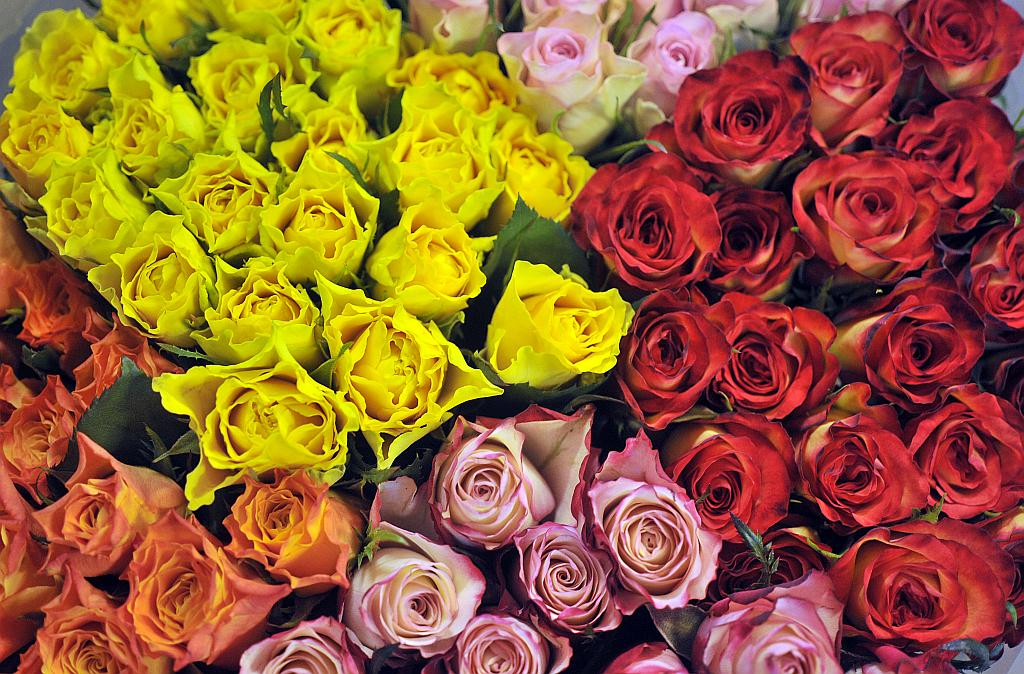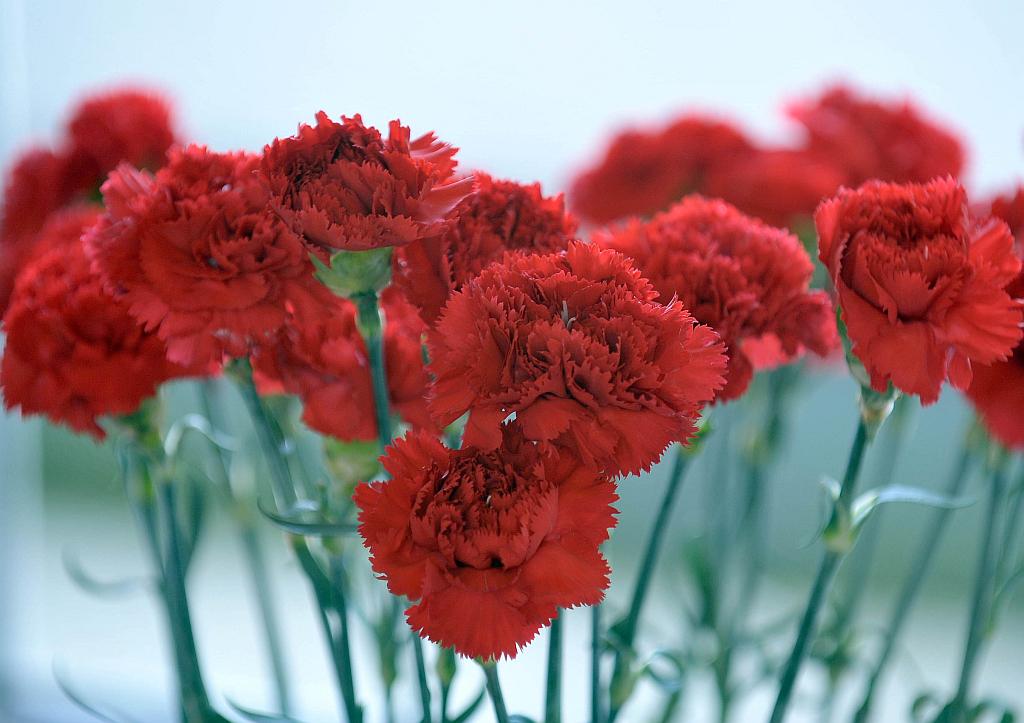A carnation in the widest sense symbolizes friendship, and also respect, while a red carnation expresses love. The Greek name of this flower is "dianthos", the divine flower. Greek mythology tells of the Goddess Artemis who used carnations to replace the eyes of a shepherd, in regret for having torn his eyes out in anger. Carnations are a part of the Roman Catholic belief as well; Christians believe that carnations bloomed for the first time at the crucifixion of Jesus, sprouting from Mary’s tears. In France a carnation was the symbol of the aristocratic House of Bourbon.

"A bouquet or a single flower are the most usual way of expressing affection, love. Every person grows soft when given a flower," ethnologist Janez Bogataj explains the tradition of giving flowers for Women's day.
In the past decade the most frequently chosen flower was a carnation, and occasionally a rose, adds Bogataj: "Women used to walk through Ljubljana with those flowers, and sometimes, as I remember, swung them around, being rather intoxicated." He explains that a carnation is "a stereotypical Slovenian flower", i.e the most often given flower. "But it also appears in Slovenian national ornaments, from which probably stems the stereotype," he says, and reminds that not so long ago it was not possible to get all kinds of flowers all year round, as today, when they are artificially grown and imported. "You had to choose from the flowers which were at that time in bloom, and available in florist shops."
He also emphasizes that giving gifts for Women's day is an invented tradition, introduced by the authorities after the end of the World War II. The celebration was at first meant mainly for wives and mothers, and then it "degenerated" into giving presents to all women, including children. "I remember the flowers were given even to girls in elementary schools," he says, and explains that in the 70s this holiday got another dimension, typical for Slovenia – mass celebrations intended for females only. The usual gifts of flowers grew into more substantial gifts – e.g. dinners or banquets, trade union trips, or other presents.
A flower or two is handier than a pot plant
That's one of the reasons women more often got cut flowers (or one flower) than pot plants: "You know how it was – women went to parties where they were given flowers, and it was a bit annoying to carry pots around; it was easier to carry a bloom or two in one’s hand." Today as well cut flowers are sold better, one of the number of Slovenian online florists explained to us; the customers mainly chose bouquets of roses combined with other flowers, or orchids and seasonal flowers. The most popular are flowers in red and violet shades, and consequently these colours prevail in the stock.
February and March – the "golden" months
These two months are the most busy months for florists, as they sell much more flowers than in the remaining part of the year. "The sale increases noticeably around the Valentine's day, Women's Day, and Mother's Day. In February and March we sell approximately three times as much, or even more, than in ordinary months."
In the past people paid a lot of attention to the colour and the sort of the flower given as a gift. "During the period of the Austro-Hungarian monarchy, and in the period between the world wars, there were special postcards in Slovenia depicting flowers, with explanations of the meaning of the individual flowers – e.g. love, hate, trust, etc.," says Bogataj. In the florist shop they told us that today things are different: "In principle people chose flowers and colours they, or the person the flower is intended for, like best, regardless of the meaning of colours. I should however mention that red roses are generally intended for a partner, or a person the buyer has romantic feelings for."
A carnation in the widest sense symbolizes friendship, and also respect, while a red carnation expresses love. The Greek name of this flower is "dianthos", the divine flower. Greek mythology tells of the Goddess Artemis who used carnations to replace the eyes of a shepherd, in regret for having torn his eyes out in anger. Carnations are a part of the Roman Catholic belief as well; Christians believe that carnations bloomed for the first time at the crucifixion of Jesus, sprouting from Mary’s tears. In France a carnation was the symbol of the aristocratic House of Bourbon.


































































